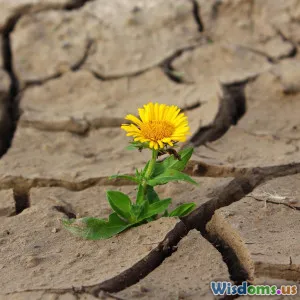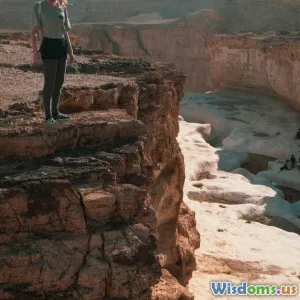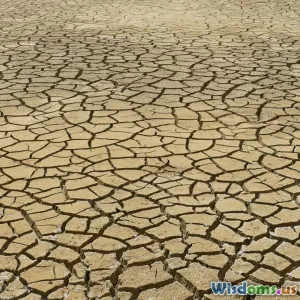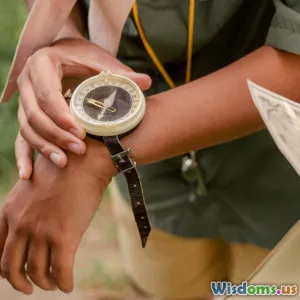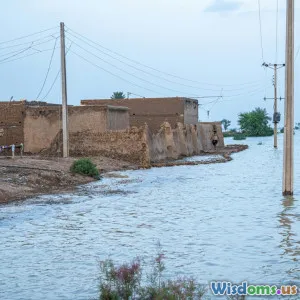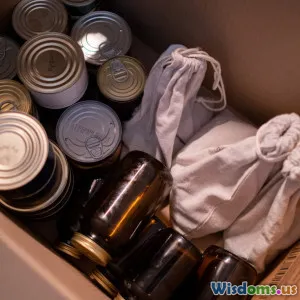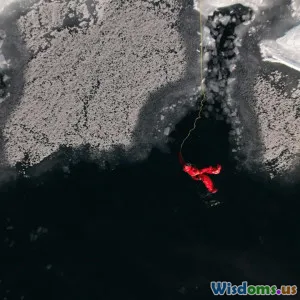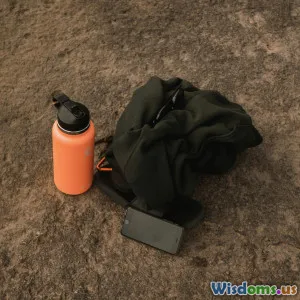
Essential Steps to Build Your Own Desert Emergency Kit
8 min read Master essential steps to create a reliable desert emergency kit for survival in harsh arid environments. (0 Reviews)
Essential Steps to Build Your Own Desert Emergency Kit
Introduction
Imagine trekking across the vast, sun-scorched expanses of a desert where temperatures soar above 100°F and life-sustaining water is scarce. In such harsh environments, having a well-prepared emergency kit isn’t just wise—it can be the difference between life and death. Desert survival poses unique challenges that demand specific preparation and knowledge. Building your own desert emergency kit ensures that you can face unexpected situations with confidence and the right tools at your disposal.
This in-depth guide walks you through the essential steps to assemble a desert emergency kit tailored to the unique hazards of arid environments. Whether you're an adventure seeker, a hiker, or someone preparing for emergencies, understanding how to build this kit is a critical survival skill.
Understanding the Desert Environment
Before delving into the contents of the kit, understanding the desert’s environment helps tailor your preparations.
-
Extreme Temperatures: Days can exceed 120°F (49°C), while nights may plummet below freezing. This temperature swing affects hydration, clothing, and shelter choices.
-
Water Scarcity: Unlike forests or mountains, water sources in deserts are rare and unreliable.
-
Terrain & Wildlife: Sand dunes, rocky plateaus, and potentially dangerous animals (e.g., scorpions, snakes) require specific tools and knowledge.
In 2019, the National Park Service reported over 3,500 rescue missions in desert parks alone, with dehydration and heat exhaustion as leading causes. This underscores the critical need for adequate preparation.
Step 1: Prioritize Hydration
Water Storage and Purification
Water is the cornerstone of desert survival. The human body requires significantly more water in dry climates due to rapid dehydration. Experts recommend carrying at least 1 gallon (4 liters) per person per day for desert adventures.
-
Containers: Choose durable, BPA-free water bottles such as Nalgene or collapsible reservoirs to save space.
-
Purification: Given limited natural sources, carry a filtration system like the Sawyer Mini or a LifeStraw, and chemical purifiers such as iodine tablets as backups.
Hydration Aids
Electrolyte packets can prevent hyponatremia caused by excessive water loss. Brands like Nuun offer portable, easy-to-use options that replenish minerals.
Example: Recreational hiker Sarah Keaton credits her small but efficient water filtration system for saving her during a desert trek in Arizona when her water supply ran dry unexpectedly.
Step 2: Shelter and Protection from Elements
Sun Protection
Avoiding harmful UV radiation and heat stroke requires:
- High-SPF sunscreen (SPF 50+), broad-spectrum.
- UV-protective clothing, such as long-sleeved, breathable shirts.
- Wide-brimmed hats.
- Sunglasses with UV protection.
Emergency Shelter
A lightweight emergency bivy sack or reflective thermal blanket can provide essential protection against sun and nighttime cold. These compact items reflect heat during the day and provide insulation at night.
Additionally, a tarp or compact tent made of UV-resistant fabric is invaluable for extended stays.
Ventilation and Cooling
Cooling wet bandanas around the neck or use of portable battery-operated fans can aid body temperature regulation.
Real-world insight: The harshness of Death Valley during summer with temperatures commonly above 120°F necessitates not only hydration but shade and protection to reduce heat injuries.
Step 3: Navigation and Communication Tools
Getting lost in a desert means facing the environment with limited resources far from assistance.
Navigation
- Compass: Quality compass suitable for desert sand use.
- Maps: Waterproof, detailed topographic maps of your area.
- GPS Device: Handheld GPS units with long battery life (consider solar chargers).
Communication
- Satellite Phone or Personal Locator Beacon (PLB): In areas without cell coverage, these devices send SOS signals to rescue centers.
- Whistle: Audible signaling method.
Few people appreciate the value of communication tools until faced with real danger. According to REI, most rescues occur because the individual did not have reliable communication devices.
Step 4: First Aid and Medical Supplies
Desert conditions increase risks of heatstroke, sunburn, insect bites, cuts, and dehydration-related issues.
Assemble a Tailored First Aid Kit
Include:
- Heat rash and blister treatment supplies.
- Aloe vera gel for sunburns.
- Antihistamines and sting relief.
- Sterile bandages, antiseptics, and wound dressings.
- Pain relievers and anti-inflammatory medication.
Pro tip: Consult a healthcare professional to tailor medications, especially if you have allergies or chronic conditions.
Step 5: Food and Energy Supplies
Energy-dense, non-perishable foods support stamina and morale.
- High-protein jerky.
- Nuts and trail mix.
- Energy bars enriched with vitamins.
- Electrolyte-replenishing drinks.
Packaging should be resealable and resistant to heat to maintain freshness.
Case in point: The US Army survival manual suggests calorie intake adjustments based on environmental stresses, highlighting increased needs during desert survival.
Step 6: Multi-tool and Fire-Making Equipment
Tools
Multitools that include knives, screwdrivers, and tweezers are indispensable for multiple survival scenarios.
Fire Creation
- Waterproof matches.
- Lighter.
- Ferrocerium rod.
Fire provides safety, warmth during cold desert nights, and the ability to signal rescuers.
Step 7: Clothing and Footwear
Lightweight, moisture-wicking, and breathable clothing that covers the body reduces water loss and sun exposure.
Good quality desert boots that offer ankle support, breathability, and protection against sharp rocks and wildlife are crucial.
Layering options for chilly nights should also be considered.
Bonus Tips
- Plan Ahead: Always inform someone about your travel plans and estimated return.
- Regular Kit Check: Replace expired items annually.
- Learn Skills: Basic survival and first aid training amplify kit effectiveness.
Conclusion
Building your own desert emergency kit is an essential life skill for anyone venturing into arid and unforgiving environments. Prioritizing hydration, protection from extreme weather, navigation, first aid, and sustenance equips you not just to survive but to face emergencies with resilience and knowledge.
As legendary explorer Will Steger once said, "Preparation involves not just having the gear, but understanding the environment and itself." By investing time and resources into crafting a tailored desert emergency kit, you take control of your safety and open doors to confident exploration in one of Earth's most challenging landscapes.
Stay safe and adventure wisely in the desert.
Rate the Post
User Reviews
Popular Posts










